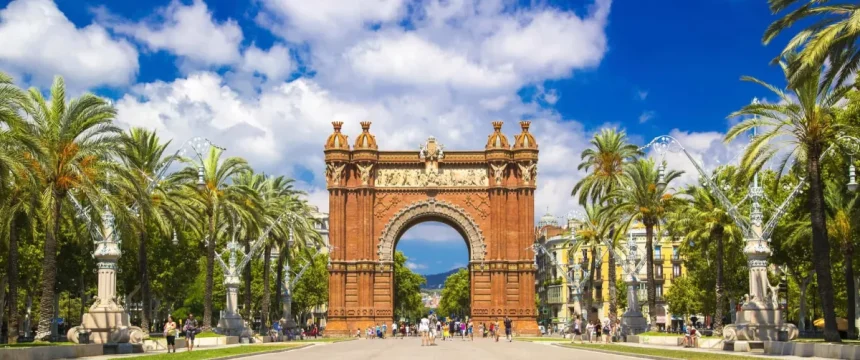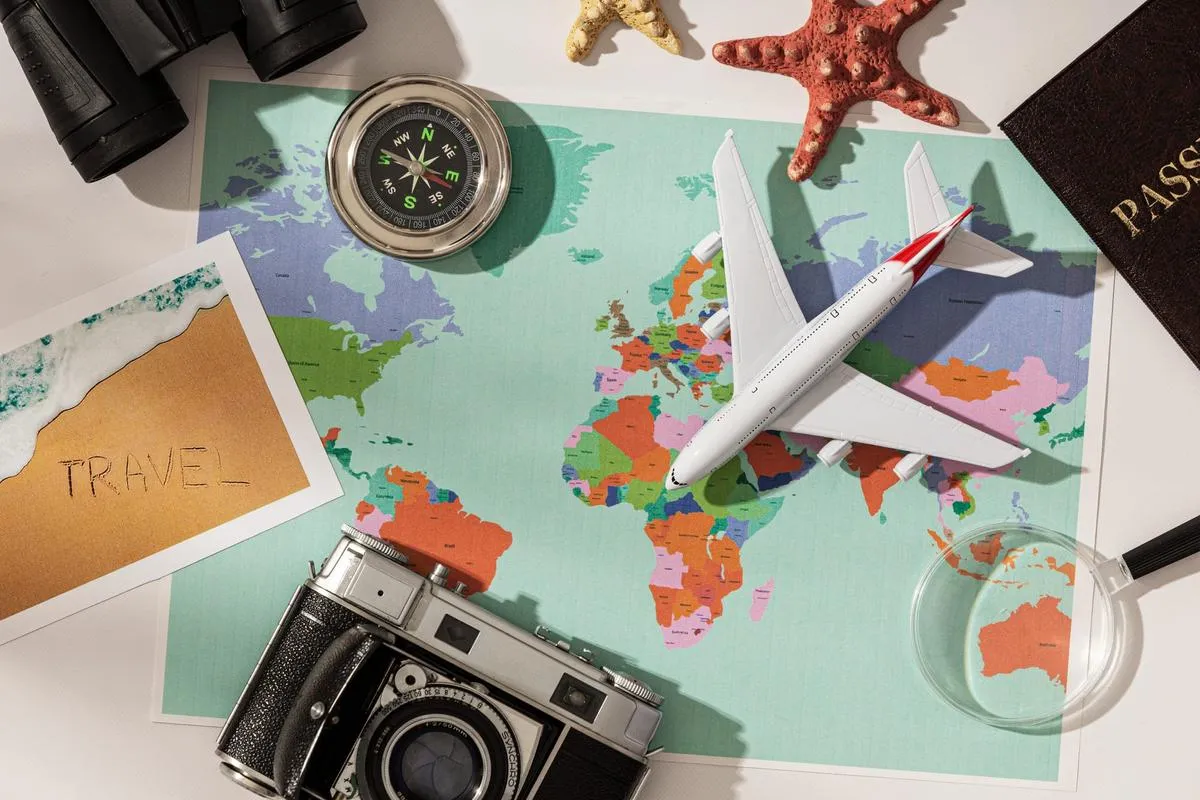Planning a trip to Spain and feeling overwhelmed by all the choices? From vibrant Barcelona to the soulful streets of Seville, picking the perfect destinations, cultural experiences, and travel tips can feel like a lot. As a passionate traveler who’s explored Spain’s hidden gems and iconic spots, I’m here to share insider advice that goes beyond the guidebooks. In this Spain travel guide, you’ll uncover practical Spain travel tips to craft an unforgettable adventure—think tapas under the stars, flamenco in cozy venues, and budget-friendly hacks for Madrid oder Mallorca. Let’s dive into the heart of Spain and make your trip one to remember!
Planning Your Trip to Spain
Best Time to Visit
Spain is a year-round destination, but the best time to visit depends on what you want to do. Spring (March to May) and fall (September to November) offer mild weather and fewer tourists, perfect for sightseeing. Summer (June to August) is hot, especially in the south, and crowded in popular spots like Barcelona and Madrid. Winter is mild in southern areas like Andalusia but can be chilly up north.
Visa and Entry Requirements
U.S. citizens can enter Spain for up to 90 days without a visa for tourism or business. Make sure your passport is valid for at least six months beyond your trip. If you plan a longer stay or different type of visit, check Spain’s official consulate website for updated visa requirements. Also, keep an eye on entry rules related to health and safety, as these can change.
Budgeting for Your Trip
Spain offers options for all budgets. Cities like Madrid and Barcelona can be pricey, especially in peak seasons, but smaller towns and rural areas are more affordable. Daily expenses vary:
- Accommodation: Hostels from $20, mid-range hotels $70–$150
- Food: Tapas bars and local markets keep costs low, around $10–$20 per meal
- Transportation: Trains and buses are economical, and budget airlines often have good deals
Planning ahead on where to stay and how to get around will help you stretch your budget. For more travel hacks and budgeting ideas, check out this travel tip guide.
Top Destinations to Explore
Spain is packed with amazing places to visit, from iconic cities to hidden gems and great day trips. Here’s a quick look at some spots you shouldn’t miss.
Iconic Cities
- Barcelona: Famous for its unique architecture like Gaudí’s Sagrada Família and Park Güell, vibrant street life, and beautiful beaches. Don’t miss exploring the Gothic Quarter and tasting local tapas.
- Madrid: Spain’s capital offers world-class museums such as the Prado and Reina Sofía, bustling plazas, and excellent nightlife. It’s a must-see on any Spain travel guide.
- Seville: Known for flamenco dancing, stunning Moorish architecture, and historic neighborhoods. Experience lively festivals and delicious Andalusian cuisine here.
Hidden Gems
- Ronda: A dramatic town perched over a deep gorge, perfect for breathtaking views and peaceful strolls.
- Cadaqués: A charming seaside village that inspired Salvador Dalí, ideal for art lovers and quiet beaches.
- Córdoba: Home to the incredible Mezquita, a stunning mosque-cathedral blending cultures.
Day Trips and Off the Beaten Path Spots
- From Barcelona, you can explore Montserrat Mountains for easy hiking and monastery visits.
- Near Madrid, visit the fairy-tale town of Toledo, rich with medieval history just an hour away.
- Around Seville, the white towns of Málaga province like Mijas offer a slower pace and authentic local life.
Whether you’re visiting iconic cities or offbeat places, Spain has something for every traveler. For advice on traveling smart, check out useful road trip travel tips to plan your routes efficiently.
Cultural Insights and Etiquette
Understanding Spanish Culture
Spain has a warm and relaxed vibe. People value family, friendship, and enjoying life at a comfortable pace. Don’t be surprised if locals greet you with a kiss on both cheeks or if dinner starts late—typically around 9 or 10 PM. Festivals, music, and social gatherings are a big deal here, so be ready to join in the fun.
Language Tips
While Spanish (Castilian) is the official language, regional languages like Catalan, Galician, and Basque are common depending on where you are. In major cities like Madrid and Barcelona, you’ll find many people speak some English, but learning basic Spanish phrases will go a long way to connect with locals and show respect. Simple greetings like hola (hello), gracias (thank you), and por favor (please) can improve your experience.
Tipping and Dining Etiquette
Tipping in Spain is more relaxed than in the U.S. It’s not required, but leaving around 5-10% in restaurants or rounding up the bill is appreciated when service is good. In cafes or bars, just leaving small change is enough. Spaniards tend to dine slowly—take your time, enjoy tapas with friends, and avoid rushing the meal. Also, remember to say buen provecho (enjoy your meal) if you want to sound polite.
Getting Around Spain Transportation Options Driving Tips
Getting around Spain is pretty straightforward, whether you prefer public transport or driving yourself. Here’s a quick rundown to help you navigate like a pro.
Transportation Options
- Trains: Spain’s train network is one of the best in Europe. The high-speed AVE trains connect major cities like Madrid, Barcelona, and Seville quickly and comfortably. For budget travel Spain options, regional trains or buses work well too.
- Buses: Affordable and widespread, buses reach many towns and rural spots trains don’t. Companies like ALSA cover most routes, making it easy to plan day trips or reach hidden gems.
- Metro and Local Transport: Cities like Madrid and Barcelona have excellent metro systems—fast, clean, and safe. Taxis and ride-sharing apps like Uber operate in bigger cities but can be pricier.
- Biking and Walking: Many towns are bike-friendly with dedicated lanes. Walking is often the best way to soak in the vibe, especially in historic centers.
Driving Tips
- Renting a Car: If you plan to explore off the beaten path or coastal areas, renting a car is a great choice. Popular rental agencies are available in airports and big cities.
- License Requirements: U.S. drivers need a valid driver’s license; an International Driving Permit isn’t mandatory but recommended for easier communication.
- Driving Rules:
- Drive on the right side.
- Seat belts are mandatory for all passengers.
- Speed limits are typically 120 km/h on highways, 90 km/h on rural roads, and 50 km/h in cities.
- Parking: Finding parking in city centers can be tough. Look for “blue zones” (paid parking) or park in public garages.
- Watch for Traffic Cameras: Spain has strict speed enforcement, so pay внимания to speed limits to avoid fines.
- Tolls: Some highways have tolls. Plan your route ahead to decide if you want to take toll-free alternatives.
Whether you go by train, bus, or car, Spain’s transport options make it easy to explore top destinations and hidden gems alike. Just pick what fits your style and enjoy!
Safety and Practical Tips
Staying Safe
Spain is generally a safe destination, but like any popular tourist spot, it’s wise to stay alert, especially in crowded areas like markets or public transport. Watch out for pickpockets in cities like Barcelona and Madrid. Keep your valuables secure and avoid flashing expensive items. At night, stick to well-lit, busy areas and use reputable taxis or rideshare services.
Health and Hydration
Spain’s Mediterranean climate can get hot, especially in summer. Drink plenty of water to stay hydrated, and carry a small bottle with you. If you’re exploring outdoors or walking a lot, take breaks in the shade and wear sunscreen. Pharmacies are everywhere, and they’re good spots to get advice or minor medications if needed.
Packing Essentials
Pack light but smart. Here’s what to bring for a comfortable trip:
- Comfortable walking shoes for city streets and cobblestones
- A hat and sunglasses for sun protection
- Lightweight clothing for daytime, but a jacket or sweater for cooler evenings
- A universal power adapter for your devices
- Copies of important documents, just in case
Being prepared keeps your trip smooth and stress-free.
For more practical travel advice, check out travel tips for first-time flyers to ease your journey to Spain.
Food and Drink in Spain Must Try Dishes Regional Specialties Foodie Experiences
Spain is a food lover’s paradise, packed with flavors that vary from region to region. Here are some must-try dishes and local specialties you shouldn’t miss on your trip.
Must Try Dishes
- Paella: Originating from Valencia, this saffron-infused rice dish often includes seafood, chicken, or rabbit. It’s a classic Spanish staple.
- Tapas: Small plates meant for sharing – think patatas bravas (fried potatoes with spicy sauce), jamón ibérico (cured ham), and croquetas.
- Tortilla Española: A hearty Spanish omelet made with potatoes and onions, perfect for any time of day.
Regional Specialties
- Basque Country: Try pintxos, which are like tapas but served on bread, often in bars around San Sebastián.
- Catalonia: Sample crema catalana, a creamy dessert similar to crème brûlée, and fresh seafood dishes in Barcelona.
- Andalusia: Don’t miss gazpacho, a chilled tomato soup perfect for hot days, and the iconic flamenco-flavored dishes in Sevilla.
Foodie Experiences
- Visit local markets like Mercado de San Miguel in Madrid or La Boqueria in Barcelona to taste fresh produce and local snacks.
- Join a cooking class to learn how to make traditional Spanish dishes yourself.
- Explore wine regions like Rioja and Ribera del Duero for wine tasting tours paired with Spanish tapas.
Eating your way through Spain is one of the best parts of the trip. Whether you’re diving into street food or sitting down at a fine dining restaurant, Spanish cuisine offers something unforgettable at every turn.
Unique Experiences and Activities in Spain
Spain is packed with unforgettable experiences beyond the usual sightseeing. Here are a few highlights that make your trip really stand out:
Cultural Festivals
- La Tomatina (Buñol): The world’s biggest tomato fight, held every August. It’s messy, fun, and totally unique.
- Running of the Bulls (Pamplona): For the brave, this July event is a classic Spanish tradition with adrenaline-pumping action.
- Seville Flamenco Festival: Dive into the passionate world of flamenco—intense music and dance that define Spanish culture.
Outdoor Adventures
- Camino de Santiago: A famous pilgrimage trail offering stunning landscapes and a deep cultural experience. Whether you hike part or all of it, it’s rewarding physically and spiritually.
- Costa Brava Beaches: Perfect for swimming, snorkeling, or just chilling by the Mediterranean Sea. Some are quieter and less crowded spots worth exploring.
- Sierra Nevada Hiking: If you like mountains, try hiking or even skiing in southern Spain’s Sierra Nevada range.
Art and History
- Madrid’s Golden Triangle of Art: The Prado, Reina Sofia, and Thyssen museums showcase world-famous works by Picasso, Velázquez, and Goya.
- Alhambra in Granada: This Moorish palace is a remarkable example of Islamic architecture mixed with Spanish history.
- Gaudí Architecture in Barcelona: Don’t miss the surreal beauty of Sagrada Família and Park Güell—both icons of modernist art and architecture.
These experiences give a solid feel for Spain’s rich culture and geography, beyond just the usual tourist spots.
For more travel advice on planning epic trips, check out my road trip travel tips that can help you navigate Spain’s diverse regions smoothly.
Aura’s Insider Tips for a Memorable Trip
Here are some practical Spain travel tips from Aura to help you get the most out of your trip:
-
Learn Basic Spanish Phrases: Even a simple “hola,” “gracias,” or “por favor” goes a long way in connecting with locals and making your experience smoother.
-
Book Tickets in Advance: For popular attractions like Sagrada Familia in Barcelona or the Alhambra in Granada, pre-booking saves you time and hassle.
-
Embrace the Siesta: Many shops close in the early afternoon. Use this time to relax or enjoy a long lunch like the locals do.
-
Use Public Transport: Cities like Madrid and Barcelona have superb metro systems. It’s cost-effective and often faster than taxis.
-
Try Regional Foods: Spain’s cuisine varies widely. Don’t stick just to paella—explore tapas in Seville or pintxos in San Sebastián for a real foodie experience.
-
Stay Hydrated and Protect Yourself from the Sun: Spain’s summers can get hot, especially in the south. Always carry water and wear sunscreen during outdoor tours.
-
Carry a Day Pack: Keep your essentials handy—water, sunscreen, a hat, and a portable phone charger.
-
Pick Up a Local SIM or Use International Plans: Staying connected helps with navigation and booking on the go.
-
Respect Local Customs: Being polite and aware of Spanish culture tips, like greeting with a light cheek kiss or keeping your voice down in public spaces, can make your trip more enjoyable.
-
Explore Beyond the Cities: Don’t miss out on hidden gems or day trips. Places like Ronda or the Camino de Santiago trail offer incredible experiences away from crowds.
-
Stay Alert but Enjoy: Follow Spain safety tips, especially in crowded tourist areas, but don’t let worries stop you from having fun.
With these straightforward tips, your Spain trip will be smoother, richer, and full of memories worth keeping. Bon voyage!












